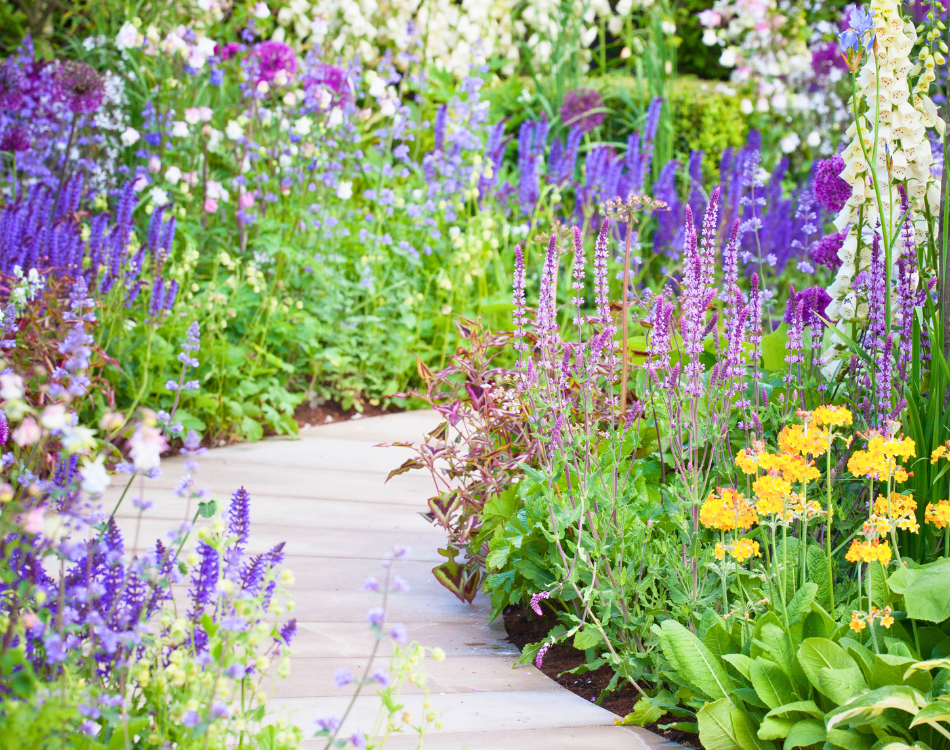A therapeutic garden is a sanctuary that caters to the holistic needs of its users. More than just a beautiful space, it’s purposefully designed to promote physical, psychological, and spiritual well-being. Therapeutic gardens serve as a refuge from the stressors of life, a platform for healing, and a playground for the senses.
Cultivating a Therapeutic Garden: A Step-by-Step Guide
Therapeutic gardens can be created anywhere, from hospitals and nursing homes to your backyard. Here is a step-by-step guide to planting your therapeutic garden.

1. Identify the Purpose
The process of creating a therapeutic garden begins with understanding its purpose. The garden might be a personal sanctuary for relaxation or an engaging space for physical activity. In healthcare settings, these gardens can cater to specific patient needs, such as promoting memory in Alzheimer’s patients with familiar plants and simple layouts.
2. Choose the Perfect Location
The location of your therapeutic garden is one of the most important factors. Look for a site that offers easy access, a certain level of privacy, and a harmonious balance of sun and shade. Ideally, the garden should be sheltered from strong winds and have a peaceful view, if possible. The best part is that the size of your space doesn’t matter – you can create these gardens anywhere, from a small patio area to an expansive lawn.
3. Design with Care
Design your therapeutic garden with accessibility and comfort top of mind. Make sure paths are wide and even (suitable for wheelchairs if necessary) and replace any steps with gentle slopes. Strategically placed seating areas invite visitors to rest and reflect, while shaded areas offer respite on hot days. Raised beds and trellises are ideal for easy access to plants.
4. Select Stimulating Plants
When you’re choosing plants, opt for ones that will engage the senses. Go for a variety of fragrances, colors, and textures – aromatic plants like rosemary or jasmine, visually appealing flowers, or plants with interesting textures like lamb’s ear or succulents are all great choices. Perennials are a good option for long-lasting interest and lower maintenance. You may also want to consider plants that attract beneficial wildlife for an additional layer of vitality. Check out our round up of the best plants for therapeutic gardens.
5. Incorporate Water Features

The sight and sound of water has a proven soothing effect. Incorporating a water feature, such as a small fountain, birdbath, or even a simple water bowl, can enhance tranquillity. If space and resources allow, a pond with aquatic plants and fish can serve as a captivating focal point.
6. Aim for Low Maintenance
Therapeutic gardens should be more about enjoyment than work. Raised beds or containers can ease the strain of planting and weeding. Consider installing an irrigation system to minimize the task of watering and choose plants that suit your local climate and soil conditions to reduce the need for constant care.
7. Engage All Senses

Therapeutic gardens stimulate all five senses. Focus on a variety of plant choices, include features like wind chimes or bird feeders, and add textured pathways. The result will be a symphony of colors, textures, fragrances, and sounds that offer an immersive experience.
8. Prioritize Safety
Safety should be at the forefront of any garden designed for therapeutic purposes. Avoid plants with sharp thorns or ones that are poisonous when ingested or touched. Ensure paths and seating are secure and include handrails where necessary.
9. Add Artistic Touches
Art and decorations can elevate the aesthetic appeal of the garden while stimulating creativity and emotion. Statues, murals, decorative plant stakes, or gazing balls can all contribute to the charm and therapeutic benefits of the garden.
Creating a therapeutic garden is a rewarding venture that provides a space for healing, relaxation, and a profound connection with nature. Despite the effort involved, the tranquillity and well-being it can foster make it an invaluable asset to any home or community. Your garden can be a personal paradise, a sensory adventure, a haven of tranquillity, and a therapeutic wonder all at once. So why not start today? We’ve curated a collection of plants that are sure to soothe the senses.
Nurture nature, and let nature nurture you.





No Comments